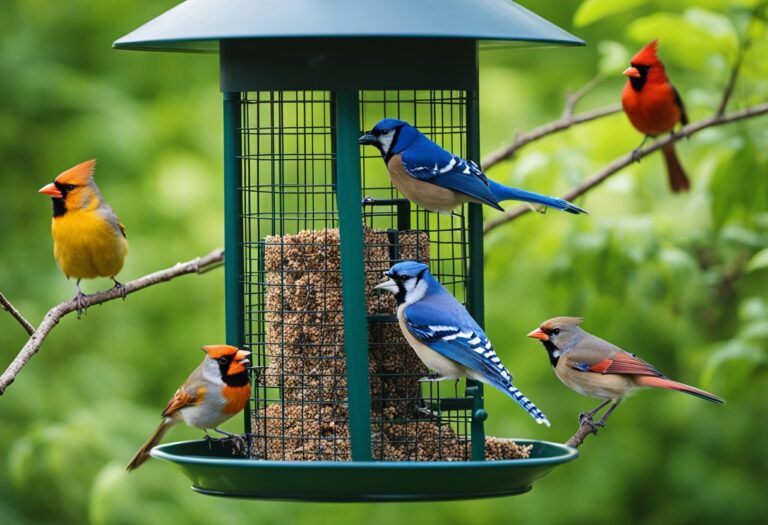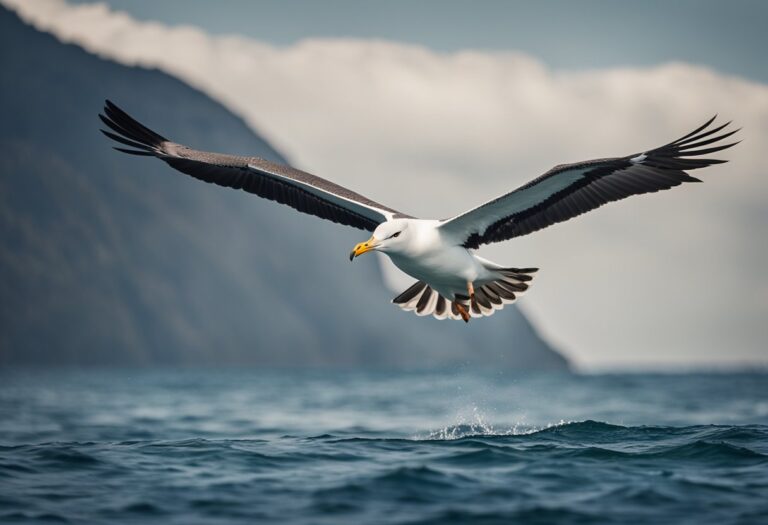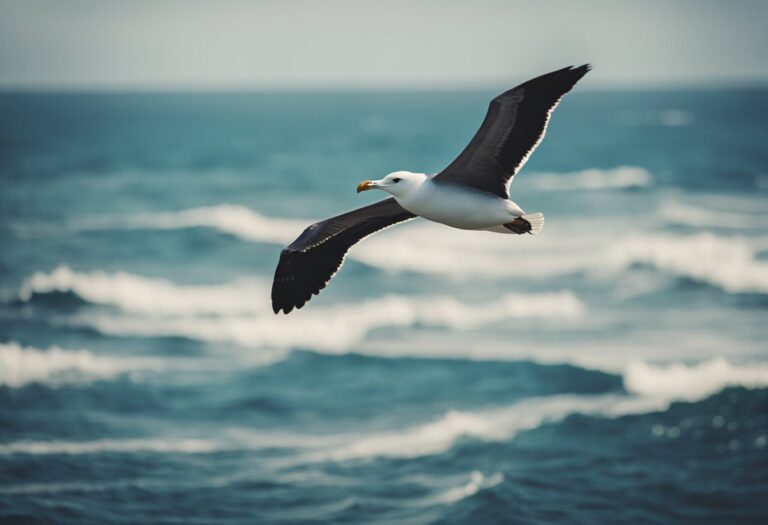Bringing birds to your garden adds color, movement, and song to your outdoor space. As a gardener, I’ve found that choosing the right flowers can transform a quiet backyard into a bustling bird sanctuary. Best Flowers to Attract Birds are purple coneflowers, sunflowers, and black-eyed Susans, which provide both food and habitat for local bird species.

When planning your bird-friendly garden, consider plants that offer multiple benefits throughout the seasons. Sunflowers provide nutritious seeds that cardinals and finches love, while coneflowers continue to feed birds long after their blooms have faded. I’ve noticed that incorporating a mix of native plants like milkweed and cardinal flowers not only attracts birds but also supports beneficial insects that birds feed on.
Key Takeaways
- Native flowering plants like coneflowers and sunflowers provide essential food sources for local bird populations.
- Creating a diverse garden with plants that bloom at different times ensures birds visit your yard throughout all seasons.
- Include a mix of flowers, grasses, and shrubs to offer birds both food and shelter in your garden habitat.
Essential Flowers for Bird-Friendly Gardens
Creating a garden that attracts birds requires choosing the right flowers that provide food, shelter, and nesting materials. The best bird-friendly gardens include a mix of perennials that return year after year and annual flowers that offer seasonal variety.
Top Perennials to Attract Birds
Coneflowers stand out as premier perennials for bird gardens. Their sturdy seed heads persist through winter, providing goldfinches and chickadees with food during scarce months.
I recommend including salvia varieties in your garden plan. Their tubular flowers attract hummingbirds with sweet nectar. Plant them in sunny spots for maximum blooming.
Penstemon offers similar benefits with colorful tubular blooms that hummingbirds cannot resist. These hardy plants thrive in various conditions and need minimal maintenance.
Asters bloom late in the season when many other flowers have faded. Their star-shaped flowers attract butterflies, while their seeds become important fall food for finches and sparrows.
Native grasses like Northern Sea Oats and Little Bluestem provide both seeds for birds and nesting material. I find these add wonderful texture to the garden while supporting bird populations.
Annual Flowers for Seasonal Variety
Sunflowers reign supreme among bird-friendly annuals. I plant varieties with large seed heads that goldfinches, chickadees, and nuthatches visit repeatedly. Choose branching types for multiple blooms or mammoth varieties for impressive seed production.
Zinnias attract hummingbirds with their bright colors while they’re blooming, then provide seeds for songbirds later. I’ve observed finches perching directly on zinnia heads to extract seeds.
Tithonia (Mexican sunflower) draws hummingbirds with its orange-red blooms. This tall annual creates natural perches for birds while providing nectar throughout summer.
Petunias work well in containers near feeding stations. Their trumpet-shaped flowers attract hummingbirds, especially the more fragrant varieties.
For quick results, I plant a mix of sunflowers, zinnias, and cosmos in spring. This annual trio creates a bird buffet by midsummer and continues feeding feathered visitors through fall.
Creating the Perfect Bird Habitat

Birds need more than just food to thrive in your garden. Creating a complete habitat involves providing places for shelter, nesting, and water—essential elements that will keep birds returning to your yard year-round.
Nesting and Shelter
Birds need safe places to build nests and hide from predators. I recommend planting a mix of evergreen and deciduous trees and shrubs at different heights. This creates a range of habitats for birds with varying needs.
Dense shrubs like viburnum or holly offer excellent protection from predators and harsh weather. Native conifers provide year-round shelter and nesting sites for many species.
Leave some brush piles in quiet corners of your yard. These simple structures offer instant shelter for ground-dwelling birds like juncos and sparrows.
I’ve found that leaving dead tree limbs (when safe to do so) attracts woodpeckers and other cavity-nesting birds. Alternatively, install birdhouses designed for specific species you want to attract.
Water Sources and Bird Baths
Water is crucial for birds, not just for drinking but also for bathing to maintain healthy feathers. I recommend placing bird baths in areas with nearby shrubs where birds can quickly retreat if threatened.
The ideal bird bath is shallow (1-2 inches deep) with gradually sloping sides. Birds prefer moving water, so consider adding a small dripper or solar fountain to attract more visitors.
During winter months, I use heated bird baths to provide essential water when natural sources freeze. This draws birds to your yard year-round and helps them survive harsh conditions.
Clean your bird baths regularly to prevent disease transmission. Fresh water twice weekly in summer and once weekly in cooler months is sufficient for maintaining a healthy water source.
Frequently Asked Questions
Many gardeners wonder which specific plants will bring birds to their yards. Different plants attract various bird species through seeds, fruits, nectar, and insect habitats.
What types of perennials are known to attract bird species?
Purple coneflower (Echinacea) is outstanding for attracting birds with its seed heads that finches and chickadees love. The large blooms also attract insects that birds eat.
Rudbeckia and Coreopsis produce abundant seeds that goldfinches and sparrows enjoy. I’ve found these easy-to-grow perennials provide food long into fall.
Lavender not only looks and smells wonderful but also attracts siskins and goldfinches with its small seeds. It’s drought-tolerant and perfect for sunny spots.
Which shrubs are most effective at attracting various bird types?
Serviceberry (Amelanchier) produces berries that attract over 40 bird species including robins, waxwings, and bluebirds. I recommend planting these for early summer bird activity.
Elderberry shrubs offer both flowers for pollinators and dark berries that catbirds, thrashers, and orioles devour. They grow quickly and provide excellent cover.
Winterberry holly, a deciduous native holly, produces bright red berries that persist through winter, providing crucial food when other sources are scarce.
How can potted plants be used to entice birds into a garden setting?
Container-grown sunflowers make perfect potted bird attractants with their large seed heads. Even on a small balcony, I can draw finches and chickadees with a single pot.
Dwarf berry bushes like blueberries work well in large containers. They provide both fruit for birds and beautiful fall foliage for human enjoyment.
Annual salvias in pots attract hummingbirds with their tubular flowers. I place these containers near seating areas to enjoy close observation of these fascinating birds.
Can you list native plants that are particularly attractive to birds?
Milkweed attracts insects that birds eat while also supporting monarch butterflies. Goldfinches use the silky seed fluff for nesting material.
Native grasses like Big Bluestem and Little Bluestem provide seeds for sparrows and juncos. They also offer shelter and nesting materials.
Joe-Pye weed attracts insects that feed birds while providing tall perches. Its large size makes it perfect for back borders in bird gardens.
What are some bird-friendly plants recommended for harsh winter conditions?
Crabapple trees with persistent fruits feed cedar waxwings and robins through winter freezes. Choose disease-resistant varieties with small fruits that birds prefer.
Bayberry shrubs produce waxy berries that yellow-rumped warblers and tree swallows eat during winter months. The berries contain fats that help birds maintain energy.
Evergreen conifers like spruce and pine don’t produce food but provide crucial shelter during winter storms. I’ve observed birds gathering in these protective branches during harsh weather.
Are there specific plants that should be grown to attract birds in regional climates such as California or Florida?
In California, toyon (Christmas berry) attracts mockingbirds, robins, and cedar waxwings with its bright red winter berries. It’s drought-tolerant and fire-resistant.
Florida gardeners can plant firebush for year-round hummingbird attraction. Its tubular orange-red flowers produce nectar while its berries feed other bird species.
I recommend using the Audubon Native Plant Database to find the best regional bird-attracting plants. Simply enter your zip code for a customized list of plants that support local bird populations.






